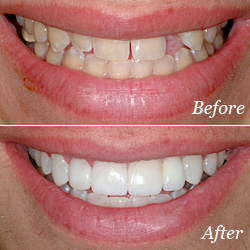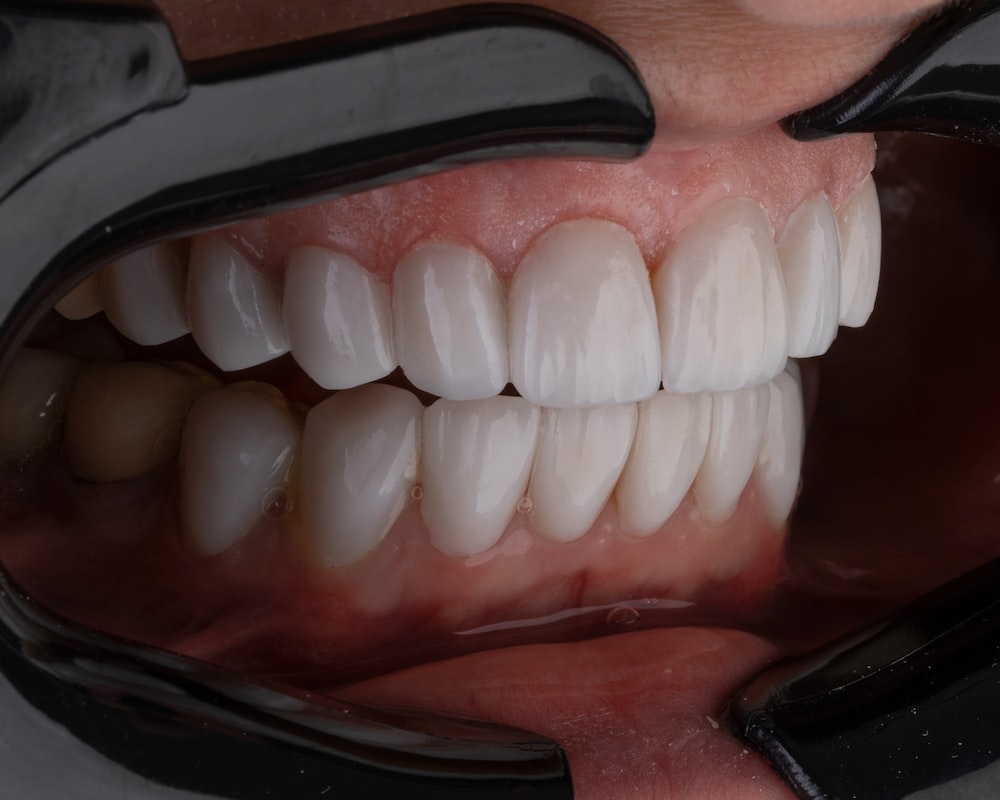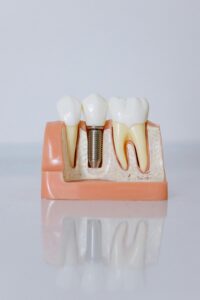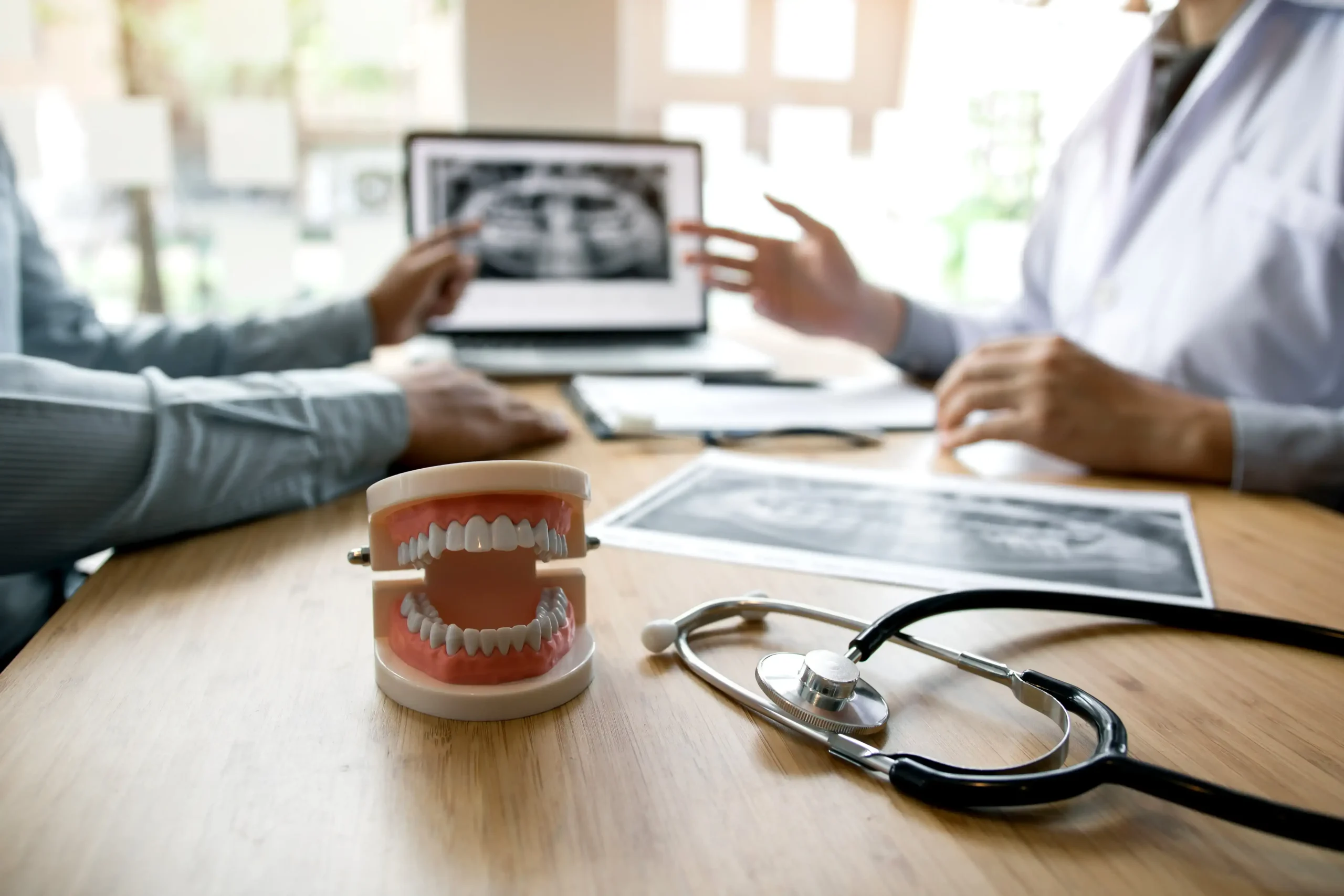Common dental emergencies include toothaches, broken teeth, and knocked-out teeth. Prompt treatment is essential to prevent further complications.
Dental emergencies often occur unexpectedly and can cause significant discomfort and distress. These situations require immediate attention to alleviate pain and prevent further damage. Common dental emergencies include severe toothaches, chipped or broken teeth, knocked-out teeth, and lost fillings or crowns.
Ignoring these issues can lead to more serious problems and potentially expensive treatments. It’s important to know how to handle these emergencies effectively and seek prompt professional care. Understanding what constitutes a dental emergency and having a plan in place can make a significant difference in preserving oral health. Always keep your dentist’s contact information handy for quick access during unexpected situations.
Toothaches
Toothaches are a common dental emergency that can strike at any moment. They can be incredibly painful and disruptive to your daily life. Understanding the causes, symptoms, and home remedies for toothaches can help you manage the pain until you can see a dentist. Let’s dive into the details.
Causes Of Toothaches
Toothaches can arise from various sources. Knowing the causes can help in addressing the root of the problem:
- Cavities: Bacteria in your mouth produce acids that eat away at your tooth enamel, leading to cavities.
- Gum Disease: Inflammation and infection of the gums can cause significant pain.
- Tooth Abscess: A pocket of pus caused by a bacterial infection can lead to severe pain and swelling.
- Tooth Fracture: Cracks or breaks in the tooth can expose nerves, causing intense pain.
- Tooth Eruption: In children, the growth of new teeth can cause pain and discomfort.
Here’s a table summarizing the common causes of toothaches:
| Cause | Description |
| Cavities | Bacterial acids erode tooth enamel |
| Gum Disease | Inflammation and infection of the gums |
| Tooth Abscess | Pocket of pus from bacterial infection |
| Tooth Fracture | Cracks or breaks exposing nerves |
| Tooth Eruption | New teeth growth in children |
Symptoms Of Toothaches
Recognizing the symptoms of a toothache can help in seeking timely dental care. Common symptoms include:
- Sharp or Throbbing Pain: Pain that comes and goes or is constant.
- Swelling: Swelling around the affected tooth or jaw.
- Fever: A fever may indicate an infection.
- Bad Breath: Persistent bad breath can accompany toothaches.
- Sensitivity: Sensitivity to hot, cold, or sweet foods and drinks.
Here is a list of symptoms to watch out for:
- Sharp or throbbing pain
- Swelling around the tooth or jaw
- Fever
- Bad breath
- Sensitivity to temperature or sweets
Home Remedies For Toothaches
While waiting to see a dentist, these home remedies can help alleviate the pain:
- Saltwater Rinse: Mix a teaspoon of salt in a glass of warm water. Rinse your mouth with the solution to reduce inflammation and kill bacteria.
- Cold Compress: Apply a cold pack to the outside of your cheek for 15 minutes. This can reduce swelling and numb the pain.
- Over-the-Counter Pain Relievers: Medications like ibuprofen or acetaminophen can help manage the pain.
- Garlic Paste: Crush a garlic clove and apply the paste to the affected area. Garlic has natural antibacterial properties.
- Clove Oil: Apply a small amount of clove oil to a cotton ball and place it on the tooth. Clove oil has numbing and antibacterial properties.

A table outlining these remedies:
| Remedy | Description |
| Saltwater Rinse | Reduces inflammation and kills bacteria |
| Cold Compress | Reduces swelling and numbs pain |
| Over-the-Counter Pain Relievers | Manages pain |
| Garlic Paste | Natural antibacterial properties |
| Clove Oil | Numbing and antibacterial properties |
These remedies can provide temporary relief but always consult a dentist for a permanent solution.
Chipped Or Broken Teeth
Dental emergencies can happen at any time, causing pain and stress. One common issue is chipped or broken teeth. These accidents can affect your smile and overall oral health. Understanding the causes, symptoms, and treatment options is crucial for managing this dental problem effectively.
Causes Of Chipped Or Broken Teeth
Chipped or broken teeth can occur due to various reasons. Knowing these causes can help in preventing such accidents. Below are some common causes:
- Physical trauma: Accidents or falls can cause your teeth to chip or break.
- Sports injuries: Playing contact sports without a mouthguard increases the risk.
- Chewing hard objects: Biting down on hard foods like ice, nuts, or candies can lead to fractures.
- Teeth grinding: Bruxism, or teeth grinding, especially at night, can wear down teeth.
- Weak teeth: Tooth decay or large fillings can weaken teeth, making them more prone to breaking.
Here’s a table summarizing the causes:
| Cause | Description |
| Physical trauma | Accidents or falls causing direct impact on teeth. |
| Sports injuries | Contact sports without protective gear like mouthguards. |
| Chewing hard objects | Biting down on hard foods or objects. |
| Teeth grinding | Bruxism, often occurring during sleep. |
| Weak teeth | Decay or large fillings that compromise tooth structure. |
Symptoms Of Chipped Or Broken Teeth
Identifying symptoms early can lead to prompt treatment. Here are some signs to watch for:
- Visible damage: A chipped or broken tooth is often visible to the naked eye.
- Pain: Discomfort may occur, especially when chewing or biting.
- Sensitivity: Increased sensitivity to hot, cold, or sweet foods and drinks.
- Sharp edges: The broken tooth may have sharp edges that can cut your tongue or cheek.
- Swelling: Gums around the affected tooth may become swollen or tender.
Here’s a detailed table of symptoms:
| Symptom | Description |
| Visible damage | Chips or breaks that are noticeable. |
| Pain | Discomfort, especially while chewing. |
| Sensitivity | Reaction to hot, cold, or sweet foods. |
| Sharp edges | Jagged edges that can injure soft tissues. |
| Swelling | Tender or swollen gums near the affected tooth. |
Treatment Options For Chipped Or Broken Teeth
Treating chipped or broken teeth depends on the severity of the damage. Below are some common treatment options:
- Dental bonding: Dentists use a tooth-colored resin to repair small chips.
- Veneers: Thin porcelain shells cover the front of the teeth, ideal for larger chips.
- Crowns: A crown or cap covers and protects a broken tooth, especially if a large portion is damaged.
- Root canal: If the damage affects the tooth’s pulp, a root canal may be necessary.
- Dental implants: In severe cases, if the tooth cannot be saved, an implant replaces the missing tooth.
Here’s a table summarizing treatment options:
| Treatment | Description |
| Dental bonding | Uses resin to fix small chips. |
| Veneers | Porcelain shells for larger chips. |
| Crowns | Caps to cover and protect broken teeth. |
| Root canal | Necessary if pulp is damaged. |
| Dental implants | Replace severely damaged or lost teeth. |
Knocked-out Teeth
Dental emergencies can happen at any time and require immediate attention. Among these, a knocked-out tooth is a common and alarming situation. Losing a tooth due to an accident can be distressing, but understanding the causes, immediate steps to take, and treatment options can help preserve your smile.
Causes Of Knocked-out Teeth
Several factors can lead to a tooth being knocked out. Identifying these causes helps in taking preventive measures. Here are some common reasons:
- Sports Injuries: Contact sports like football, hockey, and boxing can result in a knocked-out tooth.
- Accidents: Car accidents, falls, or any trauma to the face can dislodge a tooth.
- Physical Altercations: Fights or physical confrontations can cause dental injuries.
- Improper Use of Teeth: Using teeth to open bottles or tear packaging can lead to accidents.
Understanding these causes can help in taking preventive measures such as wearing mouthguards during sports or avoiding the use of teeth as tools.
Immediate Steps To Take When A Tooth Is Knocked Out
Acting quickly can save a knocked-out tooth. Here are the immediate steps to follow:
- Find the Tooth: Locate the tooth immediately. Hold it by the crown, not the root.
- Rinse the Tooth: Gently rinse the tooth with water. Do not scrub or remove attached tissue fragments.
- Reposition the Tooth: If possible, place the tooth back into the socket. Hold it in place with a clean cloth.
- Keep the Tooth Moist: If the tooth cannot be repositioned, keep it moist. Place it in milk, saline solution, or a tooth preservation kit.
- Seek Immediate Dental Care: Visit a dentist or emergency room within 30 minutes. The sooner you get professional help, the better the chances of saving the tooth.
Treatment Options For Knocked-out Teeth
Several treatment options are available for a knocked-out tooth. The choice depends on the condition of the tooth and how quickly you seek help:
- Reimplantation: If the tooth is in good condition and reinserted within 30 minutes, it can often be reimplanted successfully.
- Splinting: A dentist may use a splint to stabilize the reimplanted tooth. This involves attaching it to adjacent teeth for support.
- Root Canal Therapy: If the tooth is reimplanted, a root canal may be necessary to remove damaged pulp and prevent infection.
- Dental Implants: If the tooth cannot be saved, a dental implant may be recommended. This involves placing a titanium post in the jawbone and attaching a crown.
- Bridges or Dentures: For multiple missing teeth, bridges or dentures might be a viable option.
Consulting with a dentist promptly ensures the best treatment plan for preserving your dental health.
Lost Fillings Or Crowns
Dealing with common dental emergencies can be stressful. One such emergency is losing a filling or crown. Fillings and crowns protect your teeth from further decay and damage. Losing them can be painful and requires immediate attention. Understanding the causes, symptoms, and treatment options can help you manage this dental issue effectively.
Causes Of Lost Fillings Or Crowns
Several factors can cause fillings or crowns to come loose. These include:
- Tooth decay: Decay under the filling or crown can weaken the tooth structure.
- Chewing hard foods: Biting down on hard foods like nuts or ice can dislodge fillings or crowns.
- Teeth grinding: Grinding your teeth at night can wear down fillings and crowns.
- Injury: Trauma to the mouth from sports or accidents can knock out dental work.
- Normal wear and tear: Over time, dental restorations can naturally wear out and need replacement.
To prevent lost fillings or crowns, maintain good oral hygiene and avoid habits that can damage your teeth.
Symptoms Of Lost Fillings Or Crowns
Recognizing the symptoms of a lost filling or crown is crucial for timely treatment. Symptoms include:
- Pain and sensitivity: Exposed tooth nerves can cause pain and sensitivity to hot, cold, or sweet foods.
- Visible gap: You may notice a gap where the filling or crown used to be.
- Rough edges: The affected tooth may feel rough or sharp to your tongue.
- Bad taste: You might experience a bad taste in your mouth from trapped food particles.
- Swelling: The area around the affected tooth might become swollen or inflamed.
If you experience any of these symptoms, contact your dentist immediately to prevent further complications.
Treatment Options For Lost Fillings Or Crowns
Various treatment options are available for lost fillings or crowns. Your dentist will determine the best course of action based on your specific situation. Treatment options include:
- Temporary filling: Your dentist may apply a temporary filling to protect the tooth until a permanent solution is available.
- New filling: If only the filling is lost, a new filling can be placed to restore the tooth’s function and appearance.
- Replacement crown: If a crown is lost, a new crown can be made and fitted to the tooth.
- Root canal: In severe cases of decay or damage, a root canal may be necessary before placing a new filling or crown.
- Tooth extraction: If the tooth is beyond repair, it might need to be extracted and replaced with a dental implant or bridge.
Timely treatment can prevent further damage and restore your smile. Regular dental check-ups help catch issues early and maintain oral health.
Abscessed Teeth
Dental emergencies can happen anytime and often need quick attention. One common issue is an abscessed tooth. An abscessed tooth is a painful infection at the root of a tooth or between the gum and a tooth. Knowing the causes, symptoms, and treatment options is essential for managing this problem effectively.
Causes Of Abscessed Teeth
Several factors can lead to an abscessed tooth. Understanding these causes can help in preventing the condition. Here are some common causes:
- Deep cavities: When a cavity goes untreated, it can reach the pulp and cause an infection.
- Gum disease: Severe gum disease can create pockets where bacteria thrive.
- Trauma: A broken or chipped tooth can open a pathway for bacteria.
- Previous dental work: Sometimes, dental work can leave the tooth vulnerable to infection.
Plaque buildup is also a major contributor. Plaque is a sticky film of bacteria that forms on teeth. It can erode enamel and gums, leading to infections. It’s crucial to maintain good oral hygiene to prevent these issues.
| Cause | Details |
| Deep Cavities | Cavities that reach the pulp can cause infections. |
| Gum Disease | Creates pockets for bacteria to thrive. |
| Trauma | Chipped or broken teeth can become infected. |
| Previous Dental Work | Can leave teeth vulnerable to infection. |
Symptoms Of Abscessed Teeth
Recognizing the symptoms of an abscessed tooth is crucial for early intervention. Here are some common signs:
- Severe toothache: The pain can be throbbing and persistent.
- Sensitivity: Increased sensitivity to hot or cold temperatures.
- Swelling: Swelling in your face, cheek, or neck.
- Fever: A high fever may accompany the infection.
- Bad taste: A foul taste in your mouth from the pus.
Pain while chewing is another common symptom. The pain can be sharp and severe. Swollen lymph nodes under your jaw or in your neck can also indicate an abscess. If you notice these symptoms, seek dental care immediately.
Treatment Options For Abscessed Teeth
Several treatment options are available for an abscessed tooth. The right approach depends on the severity of the infection. Common treatments include:
- Antibiotics: To kill the bacteria causing the infection.
- Drainage: The dentist may drain the abscess to remove the pus.
- Root canal: Removes the infected pulp and seals the tooth.
- Extraction: In severe cases, the tooth may need to be removed.
Pain relief is also a key part of treatment. Over-the-counter pain relievers can help manage discomfort. Warm salt water rinses can also provide relief. After treatment, follow your dentist’s advice for care and recovery.
Understanding the causes, symptoms, and treatments for an abscessed tooth can help you manage this common dental emergency. Always seek professional dental care if you suspect an abscess.
Objects Stuck In Teeth
Dental emergencies can occur at any time. One common issue is having objects stuck in your teeth. This can be uncomfortable and, if not treated, can lead to more serious dental problems. Understanding the causes, symptoms, and home remedies can help you manage this common dental emergency effectively.
Causes Of Objects Stuck In Teeth
Several reasons can lead to objects getting stuck in your teeth. Knowing these causes can help you avoid this uncomfortable situation. Here are some common causes:
- Food particles: Small bits of food can easily lodge between your teeth, especially if you have tight spaces or misaligned teeth.
- Dental appliances: Braces, retainers, and other dental devices can trap food particles and other debris.
- Broken teeth: Chipped or broken teeth can create spaces where food and other objects can get stuck.
In some cases, objects like small bones from meat or seeds from fruits can get stuck. It’s essential to chew carefully and be mindful of what you’re eating to prevent these issues.
Symptoms Of Objects Stuck In Teeth
Identifying the symptoms early can help you take action quickly. Here are some common signs that you might have an object stuck in your teeth:
- Discomfort or pain: You may feel discomfort or pain in the affected area, especially when chewing.
- Swelling or redness: The gums around the affected tooth may become swollen or red.
- Bad breath: Trapped food particles can lead to bad breath if not removed promptly.
- Difficulty flossing: If you find it hard to floss between certain teeth, it might indicate an object is stuck there.
It’s crucial to address these symptoms early to prevent further dental issues. If left untreated, a stuck object can lead to gum infections or tooth decay.
Home Remedies For Objects Stuck In Teeth
If you have an object stuck in your teeth, try these home remedies to remove it:
- Rinsing with warm water: Swish warm water around your mouth to dislodge the object.
- Using dental floss: Gently use dental floss to remove the object. Be careful not to push it further in.
- Interdental brushes: These small brushes can help remove debris from between your teeth.
- Saltwater rinse: Mix salt with warm water and rinse your mouth to help reduce swelling and dislodge the object.
If these methods don’t work, it’s essential to see a dentist. They have specialized tools and techniques to remove objects safely and prevent further damage to your teeth and gums.
Jaw Injuries
Dental emergencies can be stressful and painful. One common type of dental emergency involves jaw injuries. These injuries can result from various causes and can lead to serious complications if not treated promptly. Understanding the causes, symptoms, and treatment options for jaw injuries can help you manage the situation effectively.
Causes Of Jaw Injuries
Jaw injuries occur due to different reasons. It’s essential to identify the cause to provide the right treatment.
- Trauma or accidents: Car accidents, falls, or sports injuries can cause significant damage to the jaw.
- Physical assault: Being punched or kicked in the face can lead to jaw fractures or dislocations.
- Medical conditions: Certain conditions like osteoporosis can weaken the jawbone, making it more prone to injury.
Another common cause is poor dental health. Infections or untreated dental issues can weaken the jawbone over time. Understanding these causes can help in prevention and early intervention.
Symptoms Of Jaw Injuries
Recognizing the symptoms of jaw injuries is crucial for timely treatment. Common symptoms include:
- Pain: Severe pain in the jaw area, especially when moving the mouth.
- Swelling: Noticeable swelling around the jaw and face.
- Difficulty chewing: Trouble chewing or speaking due to pain or misalignment.
- Numbness: Numbness or tingling sensation in the jaw or face.
If you experience any of these symptoms, seek medical attention immediately. Early diagnosis can prevent further complications.
Treatment Options For Jaw Injuries
Treatment for jaw injuries varies based on the severity and type of injury. Some common treatment options include:
- First aid: Apply ice to reduce swelling and take over-the-counter painkillers.
- Medical evaluation: Visit a dentist or doctor for a thorough examination and X-rays.
- Immobilization: Using a jaw splint or bandage to keep the jaw in place while it heals.
- Surgery: In severe cases, surgery might be required to repair fractures or dislocations.
- Medication: Antibiotics to prevent infection and painkillers to manage discomfort.
Following the treatment plan and attending follow-up appointments ensures proper healing and prevents complications.
Bleeding Or Swollen Gums
Dental emergencies can strike unexpectedly, causing pain and distress. Among these emergencies, bleeding or swollen gums are common issues that many people face. These symptoms can indicate underlying dental problems that require prompt attention. Understanding the causes, symptoms, and treatment options for bleeding or swollen gums can help manage and prevent these uncomfortable conditions.
Causes Of Bleeding Or Swollen Gums
Several factors can lead to bleeding or swollen gums. Identifying the cause is crucial for effective treatment and prevention. Common causes include:
- Gingivitis: This is the early stage of gum disease caused by plaque buildup on the gum line.
- Periodontitis: A more severe form of gum disease that can result in tooth loss.
- Vitamin deficiencies: Lack of vitamins, especially Vitamin C and K, can cause gum issues.
- Hormonal changes: Pregnancy, menstruation, and menopause can make gums more sensitive.
- Medications: Certain drugs can cause gum swelling and bleeding as side effects.
- Poor oral hygiene: Not brushing or flossing properly can lead to plaque and gum problems.
| Cause | Description |
| Gingivitis | Early stage of gum disease due to plaque buildup. |
| Periodontitis | Severe gum disease that can lead to tooth loss. |
| Vitamin deficiencies | Lack of essential vitamins like C and K. |
| Hormonal changes | Pregnancy, menstruation, and menopause increase gum sensitivity. |
| Medications | Some drugs cause gums to swell and bleed. |
| Poor oral hygiene | Improper brushing and flossing lead to plaque buildup. |
Symptoms Of Bleeding Or Swollen Gums
Recognizing the symptoms of bleeding or swollen gums is essential for early intervention. Common symptoms include:
- Red, swollen gums: Gums may appear puffy and inflamed.
- Bleeding while brushing or flossing: Gums bleed easily during oral care routines.
- Persistent bad breath: Ongoing bad breath can be a sign of gum disease.
- Receding gums: Gums pulling away from teeth, making them look longer.
- Loose teeth: Advanced gum disease can cause teeth to become loose.
- Sensitivity: Gums may be tender and painful to touch.
If you notice any of these symptoms, it’s important to seek dental advice promptly. Delaying treatment can lead to more serious dental issues and complications.
Treatment Options For Bleeding Or Swollen Gums
Effective treatment options for bleeding or swollen gums depend on the underlying cause. Here are some common treatments:
- Improved oral hygiene: Brush and floss regularly to remove plaque and prevent gum issues.
- Professional dental cleaning: Regular cleanings by a dentist can remove tartar and plaque buildup.
- Antibacterial mouthwash: Using a medicated mouthwash can reduce bacteria and inflammation.
- Dietary adjustments: Ensure an adequate intake of vitamins C and K to support gum health.
- Medication adjustments: Consult with your doctor if medications are causing gum problems.
- Scaling and root planing: Deep cleaning procedures can treat advanced gum disease.
In some cases, surgical interventions may be necessary to treat severe gum disease. Always consult with a dental professional to determine the best course of action for your specific condition.
Frequently Asked Questions
What Is The Most Common Dental Emergency?
The most common dental emergency is a toothache. It often results from tooth decay, infection, or injury. Immediate treatment can prevent complications.
What Are The Emergency Conditions For Dentistry?
Emergency dental conditions include severe toothache, broken teeth, knocked-out teeth, dental abscesses, and uncontrolled bleeding. Seek immediate dental care.
What Is The Most Common Least Life Threatening Medical Emergency In The Dental Office?
The most common least life-threatening medical emergency in a dental office is syncope, or fainting. It often occurs due to anxiety or stress. Prompt management usually resolves the issue quickly. Dental professionals are trained to handle such situations effectively.
What Is An Urgent Dental Problem?
An urgent dental problem includes severe toothache, broken teeth, lost fillings, abscesses, or bleeding that won’t stop. Seek immediate care.
Conclusion
Understanding common dental emergencies can help you act quickly and effectively. Prompt action can prevent further complications. Always have your dentist’s contact information handy. Regular dental check-ups can minimize the risk of emergencies. Stay prepared and protect your dental health for a pain-free smile.




